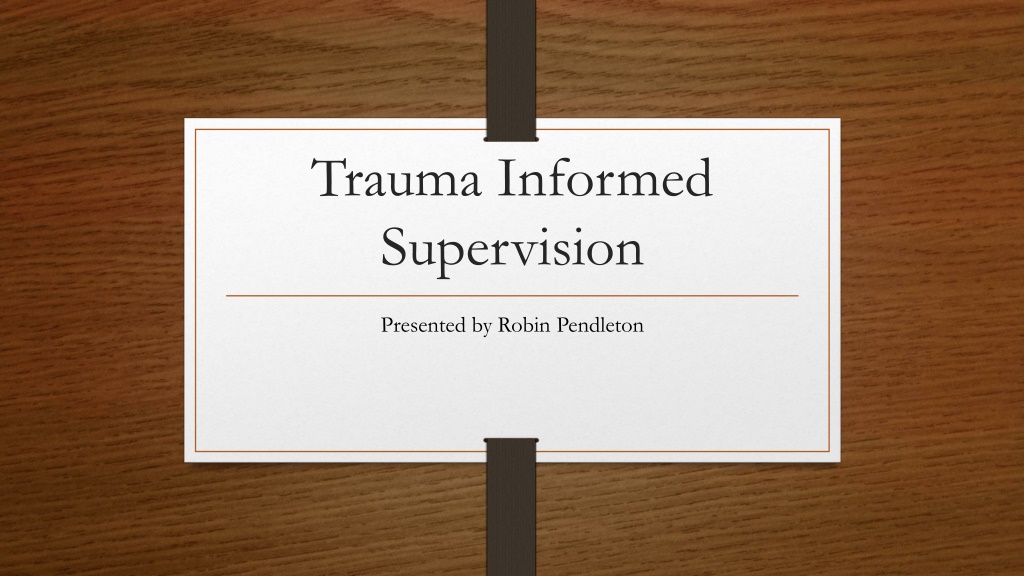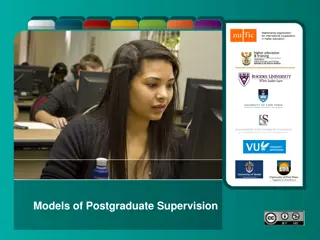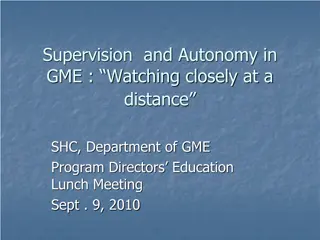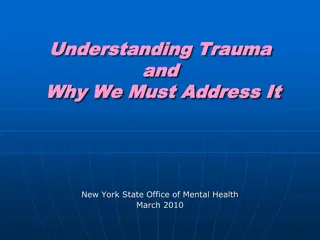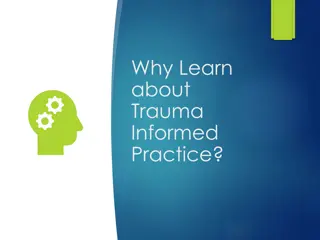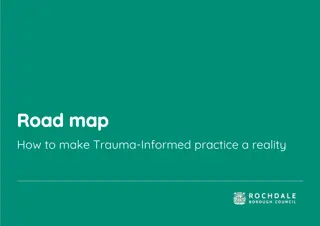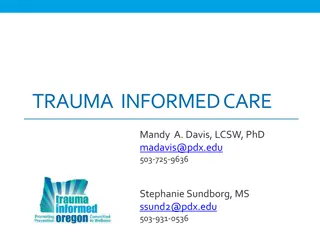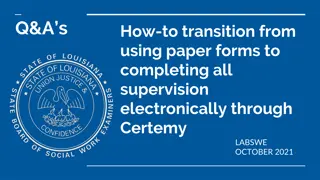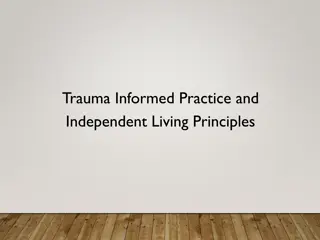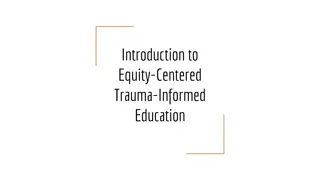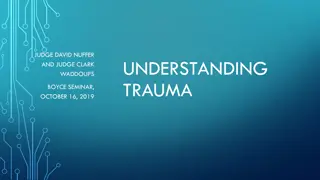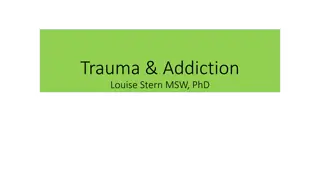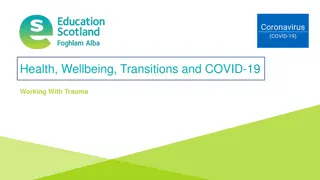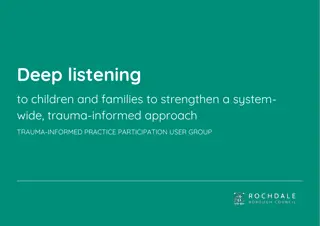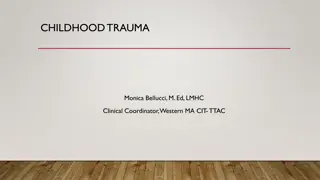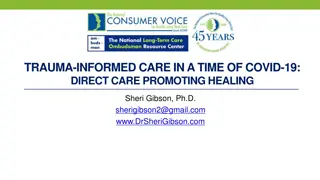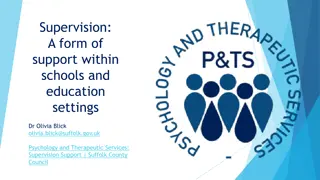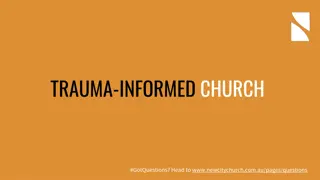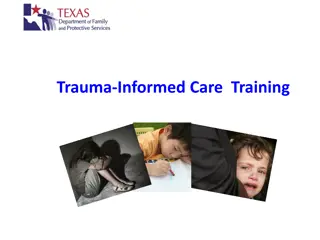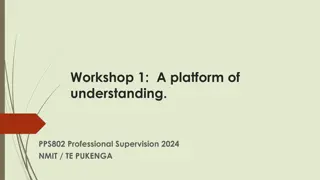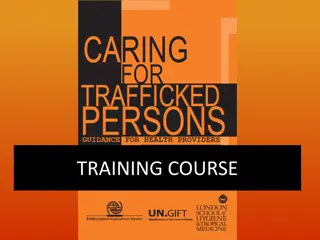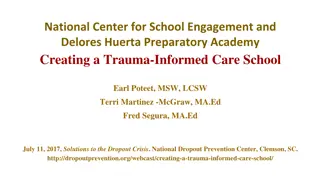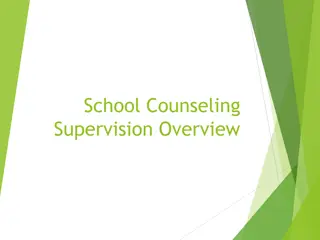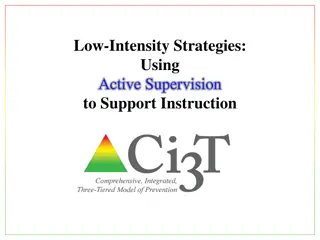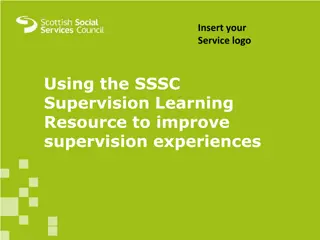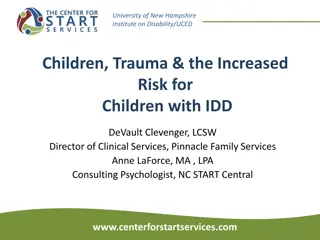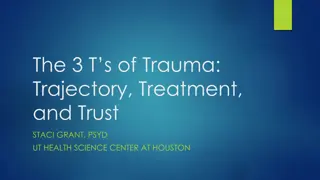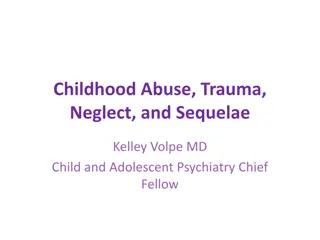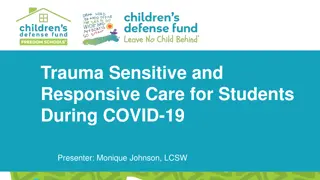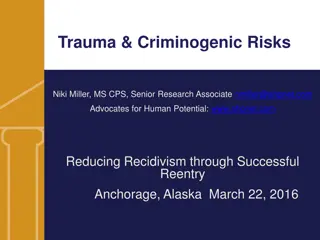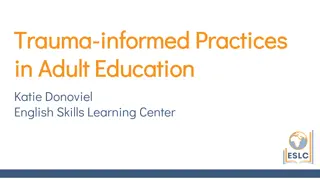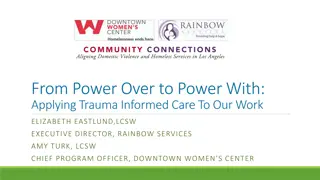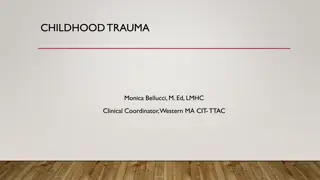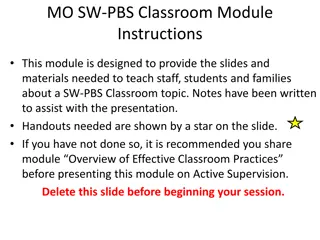Trauma-Informed Supervision Practices and Principles
Explore the concept of trauma-informed care, its principles, and core schemas distorted by trauma. Learn how trauma-informed supervision supports staff experiencing trauma, promotes resiliency, and addresses secondary trauma effects. Discover guiding questions for meaningful conversations and providing support in a trauma-informed approach to supervising.
Download Presentation

Please find below an Image/Link to download the presentation.
The content on the website is provided AS IS for your information and personal use only. It may not be sold, licensed, or shared on other websites without obtaining consent from the author. Download presentation by click this link. If you encounter any issues during the download, it is possible that the publisher has removed the file from their server.
E N D
Presentation Transcript
Trauma Informed Supervision Presented by Robin Pendleton
What Is Trauma Informed Care (TIC) A practice that puts the person first Assumes that an individual may have a history of trauma Acknowledges the role that trauma may play in a person s life Recognizes symptoms as adaptations Responds to the trauma Resists re-traumatization
Principles of Trauma Informed Care Safety- Emotional and Physical Trustworthiness and Transparency- Be clear and consistent Collaboration and Mutuality Peer support Empowerment and Choice Cultural, Historical, and Gender issues
5 Core Schemas distorted by trauma Safety Trust Esteem Intimacy Control What does this mean for our staff experiencing trauma on duty?
What is Trauma Informed Supervision? Supervising Staff Experiencing Trauma A tool to reduce the effects of compassion fatigue, secondary trauma and burn out Promotes resiliency Supports both the client and the worker WHAT IS THE DIFFERENCE BETWEEN THE WORKER AND A CLIENT?
Trauma Informed Approach To Supervising Follow the TIC principles Recognize symptoms as adaptations Secondary Trauma is a when not an if Support staff right away, don t make them wait for a set meeting Manage workloads
Trauma Informed Approach To Supervising Have meaningful, collaborative conversations Provide structure and clear expectations Make it a part of your conversation every time Validate, Validate, Validate
Guiding Questions What are your goals? What supports do you need from me? How is secondary trauma affecting you and your work right now? Any workload or workplace issues concerning you? How can I help? And again Validate, Validate, Validate
Trauma Considerations Do you know how secondary trauma is affecting your workforce? Is there a chance they are re-experiencing due to past experiences? (work or personal) Could your employee be feeling lost, hopeless or helpless Be aware of the language you use Cultural responsiveness Honor, respect, value Reflective of beliefs and traditions Remember trauma = loss
Healing The Helpers Don t ignore the signs of compassion fatigue Burnout in staff AND leadership Secondary and vicarious trauma Job satisfaction Professional Quality of Life Scale (ProQOL) https://proqol.org 30 questions to gauge compassion satisfaction, burnout, and secondary trauma
Healing The Helpers Team building Celebrate successes Training and development needs Networking
Buzz Words Self Care yeah, we say that! Take time off yeah, we encourage that! Prioritize your personal time yeah, we try to do that! Your time is your time except for on-call, and whenever I need you Employee Assistance Programs (EAP) yeah, we encourage that too, and don t be scared to use it Staff Appreciation yeah, we do that too!
Culture Change Just saying it doesn t make it happen Say it, mean it, do it and keep doing it Get to know your staff- build rapport Don t assume toughness No two interactions will be the same Critical incident policy Ensure the consistency from worker to worker, incident to incident
Normalizing Make it ok to say I need help Truly encourage self-care Check on your employees regularly Follow up more than once Encourage resources for staff outside of EAP Provide on going training and awareness of secondary trauma effects and coping strategies Utilize peer to peer support teams
Peer Support Provide team members with proven, viable, and meaningful support services to reduce anxiety and promote their general well-being Confidential and safe space for employees to talk and vent outside of supervision Provide a safe and trusting environment Teams made up of volunteers-peers in the workforce Support from others who are currently walking the walk Offers empathy and validation
The Supervisor You are not immune don t ignore yourself You will hear and experience all of your employees secondary trauma Plan for your own self-care Walk the walk Peer to peer support Give and be open to receiving feedback often Consistency Transparency Give it time
Contact Information Robin Pendleton Senior Staff Development Training Specialist Robin.Pendleton@health.mo.gov
